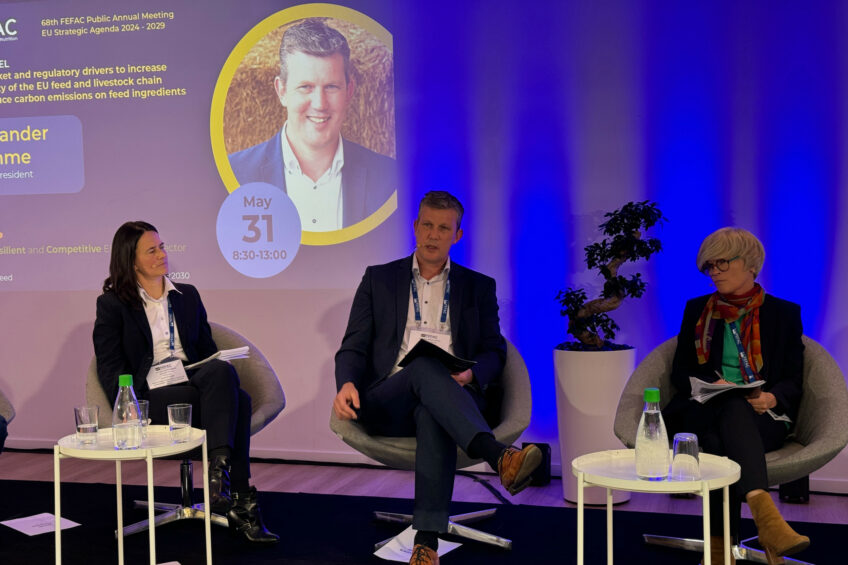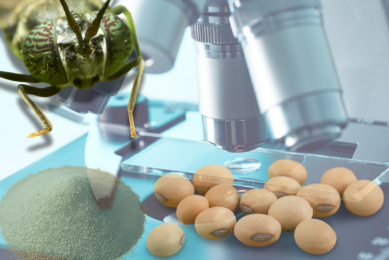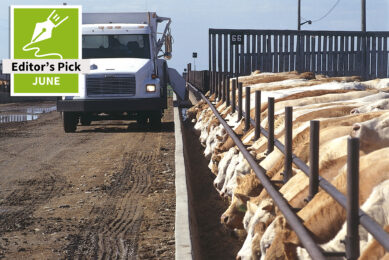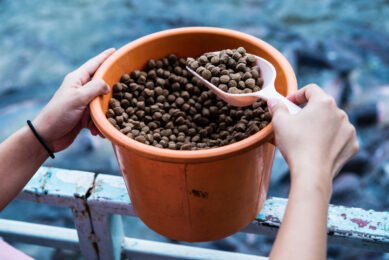EFFPA President: Former foodstuff processors need unambiguous legislation

All About Feed talks with Alexander Romme, EFFPA President. He says the sector operates with one hand tied behind its back.
Former foodstuffs have an important role to play in the circular bio-based economy, especially when used as alternative animal feed that improves the carbon efficiency and the overall sustainability of European livestock production. But former foodstuff processors have to deal with various interpretations of regulations that hinder the sector’s development. In a one-on-one interview, Alexander Romme, president of the European Former Foodstuff Processors’ Association (EFPPA) and Chief Material Management Officer at FeedValid, spoke openly about the challenges and opportunities the growing sector faces.
“When legislation can be explained 2 ways – from one inspector to another inspector – or can be explained differently between member states, companies get uncertain,”
What are former foodstuffs?

It’s an unfortunate truth that not all processed food makes it to consumers. During production, a small percentage is diverted to other channels because it is either broken or misshapen, incorrectly flavoured or mislabelled. This residual flow is still suitable for use in animal feed, however. This is where former foodstuff processors or FFPs come in. If the foodstuff is unsuitable for human consumption and cannot be diverted to, say foodbanks, it is collected and transported to processing facilities. Controls are in place to ensure that the food products meet both safety and quality standards. Once it reaches an FFP, the packaging is removed, and the product is mixed, blended and/or dried.
Most former foodstuffs are an excellent source of energy, as they contain high quality sugar, starch, oils and fats. In animal nutrition, they function as an alternative to cereal grains, such as wheat, maize or barley. Each year, Europe processes approximately 5 million tonnes of former foodstuffs into high energy animal feed. According to EFPPA, replacing 5 million tonnes of former foodstuffs with cereal grains would require nearly 400,000 hectares of arable land and over 300 billion litres of water to produce. It is the association’s belief that using former foodstuffs in feed not only increases feed sustainability, but also supports efficient food production and a low-carbon, bio-based circular economy.
Regulatory challenges slow sustainability goals
Alexander Romme, president of EFFPA, spoke on behalf of the sector at the 68th FEFAC Annual Meeting, held in Brussels at the end of May, where he raised concerns about the interpretation of current legislation that slow the sustainability goals of the sector.
“When legislation can be explained 2 ways – from one inspector to another inspector – or can be explained differently between member states, companies get uncertain,” he said. “And what do you do when you’re uncertain? You say ‘better safe than sorry.”
Romme is referring specifically to feed legislation and the inspections that come with ensuring regulatory guidelines are met. The European Commission has developed specific guidelines for the feed use of food no longer intended for human consumption on topics such as the use of food past the ‘use by’ and ‘best before’ dates. Romme called the guidelines “very helpful”.
“However, some of the legislation was clearly written with other uses in mind,” he said.
Animal by-products legislation
The animal by-products legislation, for instance, was developed to prevent animal diseases, such as such as bovine spongiform encephalopathy (BSE) and foot-and-mouth disease (FMD) from entering the livestock feed chain.
The legislation affects residual streams other than meat, raw eggs and raw milk, which makes it quite complicated. Take bread, muesli, cornflakes and chocolates for example. Because they contain traces of milk, honey, or eggs, these products are considered “category 3” animal by-products. This means they are safe for human consumption and carry no animal health risks. However, this can trigger particular registration requirements at the FFP level, and confuses suppliers from the food production sector.
Romme said they do have some clarification on the legislation. Section 10 of Regulation (EC) No 294/2013 was amended to make clear that some animal byproduct (ABP) former foodstuffs do not require further treatment when used in feed because they’ve already undergone treatment during food processing. As such, ABP former foodstuffs do not carry any elevated risks in comparison to former foodstuffs of vegetable origin. However, because of the way EU legislation is formulated, they need to be identifiable throughout the chain. This type of ambiguous wording leaves FFPs feeling like they’re operating with one hand tied behind their backs, Romme said. Clarity would allow EFFPA members to gain access to more residual streams.
… when factories throw out perfectly good products, it’s economically and sustainability-wise a pity.”
Downgrading due to foreign material
Further clarification is needed in other areas as well, Romme said. There is a line in the animal by-products legislation that states when “category 3” material contains certain contaminants it should be downgraded to “category 2”. Category 2 materials may pose a risk to animal health and the environment. Specifically, products of animal origin that have been declared unfit for human consumption due to the presence of foreign material, such as plastic or stones. Yet, for FFPs, this is not an issue, said Romme.
“They have machinery that can remove and separate packaging and foreign material from the feedstuff,” Romme said.
Misinterpretation of guidelines
In other cases, inspectors unfamiliar with EU guidelines sometimes misinterpret guidelines when inspecting FFP suppliers. For instance, under EU guidelines, when food products fall on the floor of a processing plant, as long as there is a protocol to keep the floor clean, there are measures to prevent microbiological, chemical or physical contamination, and there is adequate equipment for collecting the food from the floor, those products can be re-purposed in the FFP sector.
“However, inspectors are inconsistent on this point, which creates further confusion around what is acceptable and what is not,” Romme said. “Everybody has their own view and their own expertise.”
Competition from the energy sector
Former foodstuff processors don’t just face regulatory confusion; they also face unfair competition for the residual flow on which they rely. The energy sector, for example, uses the same former foodstuffs to convert ‘waste’ into energy. But because the sector also receives funds and subsidies for doing so, and because they often earn more for their end product, they can afford to pay more for former foodstuffs.
Romme suggested the playing field could be levelled if policymakers created clearer legislation around the hierarchy of use chart, as developed by the NGO Waste and Resources Action Programme (WRAP). In its Food Waste Reduction Roadmap, WRAP ranks prevention and redistribution via food banks first, and use as animal feed second. These 2 fall under the ‘prevention/reduction’ category, while use for energy production falls under ‘waste’.
“It’s a real topic,” Romme said. “Because at the end, when factories throw out perfectly good products, it’s economically and sustainability-wise a pity.”
Opportunities for growth and improvement
Beyond regulatory clarity, Romme highlighted several developments that could help accelerate sustainability goals within the sector. To further professionalise and improve more circular production, FFPs need to invest in unpackaging technology, he said. This, he clarified, is not a goal of EFFPA, as its members are also competitors and improved unpackaging technology could provide a competitive edge. But it should be the goal of individual FFPs.
EFFPA has a key role to play in other areas. Members could benefit from clear industry-driven guidelines on best practices, including guidelines on how – and how often – residual products should be analysed. Doing so would further unite the sector.
Speaking on behalf of EFFPA and its members, Romme concluded by saying, “I think we are the perfect example of circularity, providing a solution for food waste and for more sustainable feed.”











